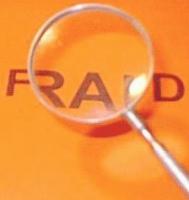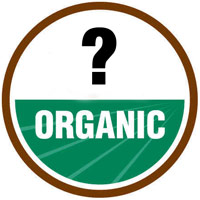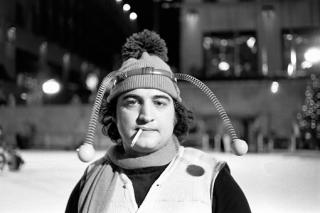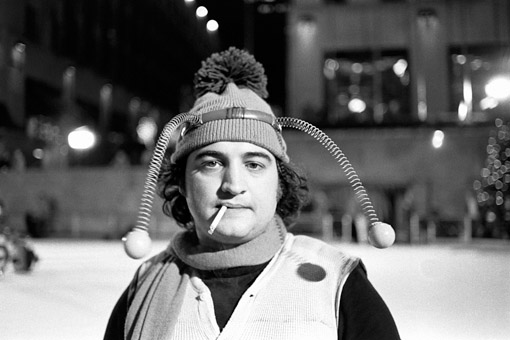Fictional movie director Jack Woltz, after refusing to cast a part to The Godfather’s godson, Johnny Fontane, woke up with a horse head in his bed.
Europeans are waking up to horsemeat in food – some with horror, some with  delight.
delight.
Food fraud and hucksterism is as old as human trade.
But given the depth, the cultural variations and the criminal element involved in substituting cow with horse, one wonders – what were all those food inspectors doing all along?
The New York Times reports that few things divide British eating habits from those of Continental Europe as clearly as a distaste for consuming horse meat, so news that many Britons have unknowingly done so has prompted alarm among shoppers and plunged the country’s food industry into crisis.
A trickle of discoveries of horse meat in hamburgers, starting in Ireland last month, has turned into a steady stream of revelations, including, on Friday, that lasagna labeled beef from one international distributor of frozen food, Findus, contained in some cases 100 percent horse meat.
The widening scandal has now touched producers and potentially millions of consumers in at least five countries — Ireland, Britain, Poland, France and Sweden — and raised questions of food safety and oversight, as well as the possibility of outright fraud in an industry with a history of grave, if episodic, lapses despite similarly episodic efforts at stricter regulation and reform. Already, tens of millions of hamburgers from several suppliers have been recalled.
Though public health is not at issue now, government oversight is, and the latest developments have echoes of earlier European food safety crises, including mad cow disease in Britain and dioxin in eggs and poultry in Belgium. Those tended to mushroom once investigators traced products through the Continent’s complex web of producers, food makers and suppliers.
The Guardian notes the eating of horses has a long history. Many prehistoric cultures both ate and sacrificed horses, and the ban on horse meat by Pope  Gregory III in 732 was in part an attempt to eradicate pagan rituals in the Germanic states.
Gregory III in 732 was in part an attempt to eradicate pagan rituals in the Germanic states.
Bowing to cultural concerns, the UK Food Standards Agency didn’t say horse meat was safe as long as it was piping hot, but rather issued interim advice to public institutions, such as schools and hospitals, caterers, and consumers purchasing from caterers, reminding public of their responsibility for their own food contracts. We expect them to have rigorous procurement procedures in place, with reputable suppliers.
Sweden’s National Food Agency (Livsmedelsverket) is considering reporting food giant Findus to the police over the horse meat lasagne scandal, and France is very, very angry, blaming Romanian butchers and Dutch and Cypriot traders as part of a supply chain that resulted in horsemeat disguised as beef being sold in frozen lasagna around the continent.
At some point, maybe a retailer will take responsibility for the food it sells.
The following animation is over the top, but indicative of what’s out there.


.jpg) told the owner of the bakery that they were officers from FDA and had been getting complaints from its customers about the inferior quality of products.
told the owner of the bakery that they were officers from FDA and had been getting complaints from its customers about the inferior quality of products..jpg) that the store sets. The report also said outlet personnel cooked and sold beef that had fallen on the outlet’s kitchen floor.
that the store sets. The report also said outlet personnel cooked and sold beef that had fallen on the outlet’s kitchen floor.
.jpg) liquid fertilizer touted as made from all-natural products such as fish meal and bird guano that instead was spiked with far cheaper synthetic chemicals.
liquid fertilizer touted as made from all-natural products such as fish meal and bird guano that instead was spiked with far cheaper synthetic chemicals. falsely labeled as U.S. wild caught shrimp and selling shrimp that falsely claimed to be larger and more expensive than they actually were; and for buying fish they knew had been illegally imported into the United States. Some of the fish tested positive for malachite green and Enrofloxin, both of which are considered health hazards and banned from U.S. food products.
falsely labeled as U.S. wild caught shrimp and selling shrimp that falsely claimed to be larger and more expensive than they actually were; and for buying fish they knew had been illegally imported into the United States. Some of the fish tested positive for malachite green and Enrofloxin, both of which are considered health hazards and banned from U.S. food products..jpg) Orange counties.
Orange counties. cartons it was impossible to determine if they were free range or not.
cartons it was impossible to determine if they were free range or not.
 German conglomerate, jet-setting executives, doctored laboratory reports, high-profile takedowns and fearful turncoats.
German conglomerate, jet-setting executives, doctored laboratory reports, high-profile takedowns and fearful turncoats. the U.S., where tariffs have been implemented to staunch the flow and protect its own struggling industry.
the U.S., where tariffs have been implemented to staunch the flow and protect its own struggling industry. The phoney inspectors sometimes threaten fines for failing to schedule inspections.
The phoney inspectors sometimes threaten fines for failing to schedule inspections. Being in Kansas, I ordered the mussels from Prince Edward Island (that’s in Canada) and the featured white wine from Australia, which, to our ultimate surprise, cost $15 a glass. The extent to which restaurants will go to rip people off, especially in a crappy economy, apparently knows no bounds. I take responsibility, but won’t be going back.
Being in Kansas, I ordered the mussels from Prince Edward Island (that’s in Canada) and the featured white wine from Australia, which, to our ultimate surprise, cost $15 a glass. The extent to which restaurants will go to rip people off, especially in a crappy economy, apparently knows no bounds. I take responsibility, but won’t be going back.(1).jpg) Then, sometime in the twentieth century, Artificial Preservatives, Colors and Flavors were invented by “food scientists,” devoted to improving the quality of our lives through science. The ability to color, flavor and preserve food indefinitely made it possible to recreate authentic-seeming foods and make them last virtually forever. …
Then, sometime in the twentieth century, Artificial Preservatives, Colors and Flavors were invented by “food scientists,” devoted to improving the quality of our lives through science. The ability to color, flavor and preserve food indefinitely made it possible to recreate authentic-seeming foods and make them last virtually forever. ….jpg) Shortly before baby Sorenne was born
Shortly before baby Sorenne was born